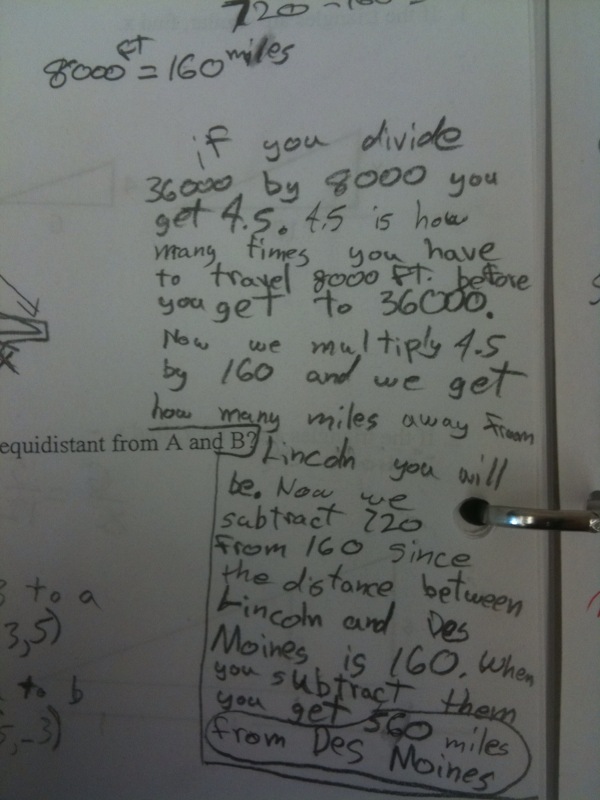An airplane is flying at 36,000 feet directly above Lincoln, Nebraska. A little later the plane is flying at 28,000 feet directly above Des Moines, Iowa, which is 160 miles from Lincoln. Assuming a constant rate of descent, predict how far from Des Moines the airplane will be when it lands. [1]
Question: Which student demonstrates better understanding? Why?
Student A

Student B

Student C

Student D

[1] Problem courtesy of Phillips Exeter Academy. Hat Tip: Alison Blank





2 comments:
Student A has some incorrect wording I think (subtract 720 from 160?). The work is there, but the reasoning is not obvious: where did the 4.5 come from at the beginning?
Student B seems to get the scenario, but the method does not scale well.
Student C seems to have done the same method as B, but with more words.
Student D has the correct answer and the most scalable method, but lacks the explanation of the others. I would probably have done it in this same way: Interpret the words as a more traditional math problem, work through the math problem, reinterpret the answer.
It is a basic linear problem and they all "get it." Being able to effectively communicate the complex processes of the mind in arriving at a solution is an entirely different thing. Mathematicians will appreciate D while engineers might appreciate B but english majors and other right-brainers might better appreciate C. In the end I consider A the brightest of the lot in general terms.
Post a Comment